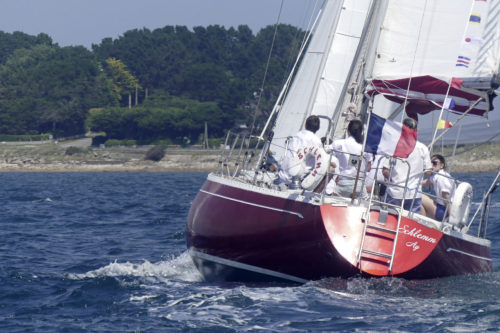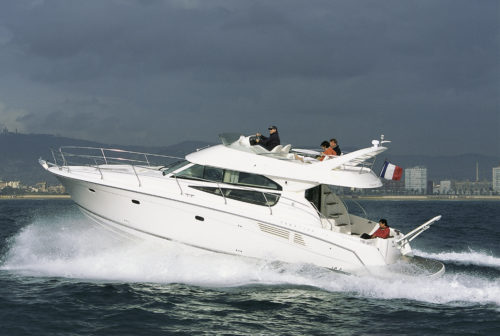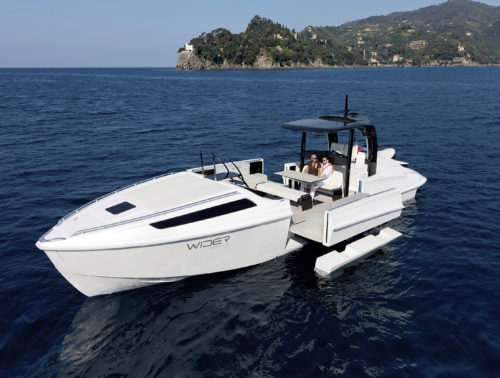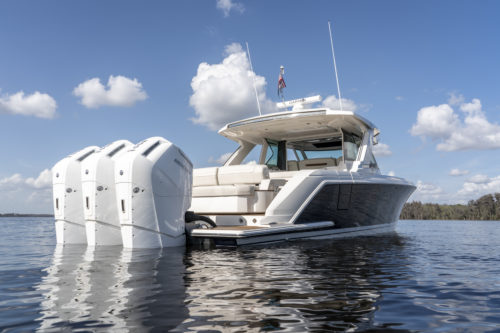1964 Transat, Eric Tabarly, single-handed winner.

Birth of a prodigy
At the age of 32, the young sailor designs a monohull specifically with this event in mind: a groundbreaking move at the time. This French skipper shakes up the world of naval architecture and invents a winning machine for a specific program: sailing solo against the wind.
During his training sessions on board a Tarann (9.50m), the sailor from Brittany realizes that he can sail on a bigger and therefore quicker boat. Pen Duick II will be 4m longer (13.50m). It has quite a small sail area for its size and is light so that it can be maneuvered solo more easily (75m2 for 8 tons). Its course steadiness is further strengthened by a small 10m2 mizzen sail positioned at the very rear. It is fitted with a plexiglass bubble, borrowed from plane designs (Tabarly was a military pilot) and placed above the chart table, enabling the skipper to observe his sails without heading out on deck.
On May 23, he sets sail and raises his 82m2 spinnaker under the amazed eyes of all the spectators and his opponents, who were unable to follow his lead!
En route for victory
During his crossing, the Pen Duick does not suffer any serious problems, but has a few faults that are difficult to manage when sailing solo. For instance, when the autopilot system broke down, this could have marked the end of his race. But the unrivaled seamanship of this sailor from Brittany enables him to continue racing, albeit with great difficulty and disrupted sleep. There are still 2,000 miles to go, during which the skipper sleeps for an hour and a half at a time. With this problem, he thinks that winning is simply out of the question.
On the 27th day of sailing, he is within sight of the finish. A motorboat passes in front of him. A man at the helm shouts out with a nasal accent: “You are the first”.
A few hours later, Tabarly is declared the winner of the second Single-handed Transatlantic race after sailing for 27 days and 23 hours. He finishes 2 days and 20 hours ahead of Francis Chichester and his Gipsy Moth III.
A turning point for recreational boating
In January 1965, during the inauguration of the Paris boat show, Eric Tabarly is warmly congratulated by General de Gaulle.
With hindsight, the victory of the now famous number 14 is truly a unique milestone. At the time, a deep interest in sea sports and recreational boating was starting to build in France. Tabarly’s historic victory helps this truly develop.
In 1965, boat production takes a major step forward, with 78% growth during the year that follows Tabarly’s victory in Newport!
Why the Pen Duick?
The name of the black ketch that won in Newport is taken from the first Pen Duick, the boat that Tabarly inherited from his father in 1952. Eric Tabarly did not like people to say the Pen Duick I. And he always corrected anyone he was talking to by gently reminding them that this was simply the Pen Duick, which means “coal tit” in Breton.
This name resonates with all sailors, becomes legendary, and fascinates the world of offshore racing. Today, it still evokes the renowned dynasty of Tabarly boats, through to the Pen Duick VI, which won the 1976 Transatlantic race. Each one of them, in their time, represented a major technological breakthrough for offshore sailing competitions.

























































































